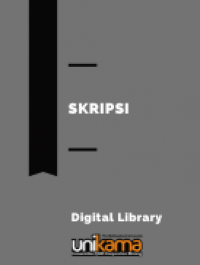
Electronic Resource
An Analysis Of Fleming's Theory On Vark (VIsual, Aural, Read/White, And Kinesthetic) Learning Style In Cpllege Students
Vocabulary is a basic part of mastery foreign language, by knowing vocabulary students can master the foreign language by spoken or written form. The way students learn or absorb information differs from one to another. All the ways that students use for study that explained above called by learning style. Learning style is individual learning technique that needs to absorb information or understanding a lesson. By knowing students learning style, teacher will also have better understanding which are suitable for the students. This studywas aimed to finding the learning style used by college students in learning English vocabulary. This research used qualitative research. The researcher used questionnaire and interview for gathering the data. The subject of this study were forty students of 2019 intake of English Education Study Program at Universitas PGRI Kanjuruhan Malang. The researcher found out that 3 students (7.5%) used visual type, 4 students (10%) used aural type, 3 students (7.5%) used read/write type, and 30 students (75%) used kinesthetic type, and it can be summarized that the college students used K type or kinesthetic learning style when they are absorbing information or learning in general. On the other side, the result of the interview shown that learning style used by college students for learning English vocabulary was read/write (R) type and kinesthetic (K) type in the second. It can be conclude that for learning something in general and in specific, students has different learning style. The learning style can be changes over time according to the conditions that students need. Based on the stages of cognitive development, it can be said that college students included to adulthood and it means the use abstract thought when they learnt something. They should have been able to understanding the material by using visual learning style, since kinesthetic style is more suitable for children between 2 and 7 years of age than for adults. This indicates that between student’s beliefs and teacher’s beliefs are incompatible
Ketersediaan
| 21345383/PB/2023 | KKI 420 RUS a/s | Perpustakaan Unikama | Tersedia |
Informasi Detail
- Judul Seri
-
-
- No. Panggil
-
KKI 420 RUS a/s
- Penerbit
- Malang : English Education Department-Unikama., 2021
- Deskripsi Fisik
-
xi, 39hlm 26cm
- Bahasa
-
Indonesia
- ISBN/ISSN
-
-
- Klasifikasi
-
420
- Tipe Isi
-
text
- Tipe Media
-
PDF
- Tipe Pembawa
-
-
- Edisi
-
1
- Subjek
- Info Detail Spesifik
-
-
- Pernyataan Tanggungjawab
-
-
Versi lain/terkait
Tidak tersedia versi lain
Lampiran Berkas
Komentar
Anda harus masuk sebelum memberikan komentar
 Karya Umum
Karya Umum  Filsafat
Filsafat  Agama
Agama  Ilmu-ilmu Sosial
Ilmu-ilmu Sosial  Bahasa
Bahasa  Ilmu-ilmu Murni
Ilmu-ilmu Murni  Ilmu-ilmu Terapan
Ilmu-ilmu Terapan  Kesenian, Hiburan, dan Olahraga
Kesenian, Hiburan, dan Olahraga  Kesusastraan
Kesusastraan  Geografi dan Sejarah
Geografi dan Sejarah